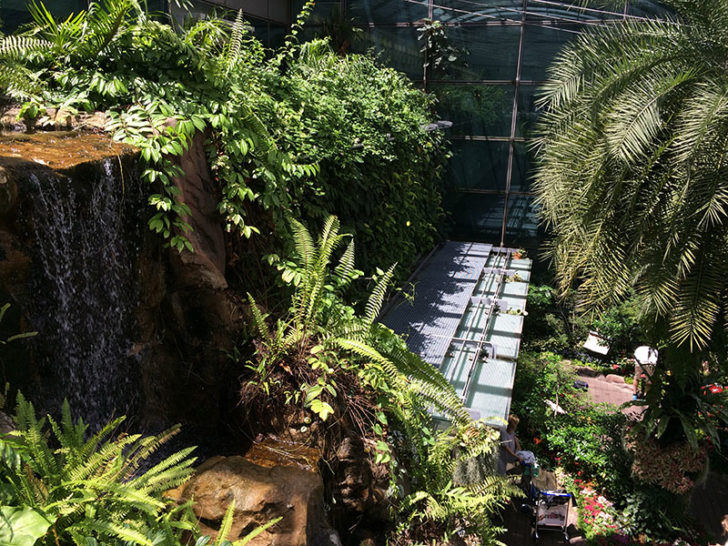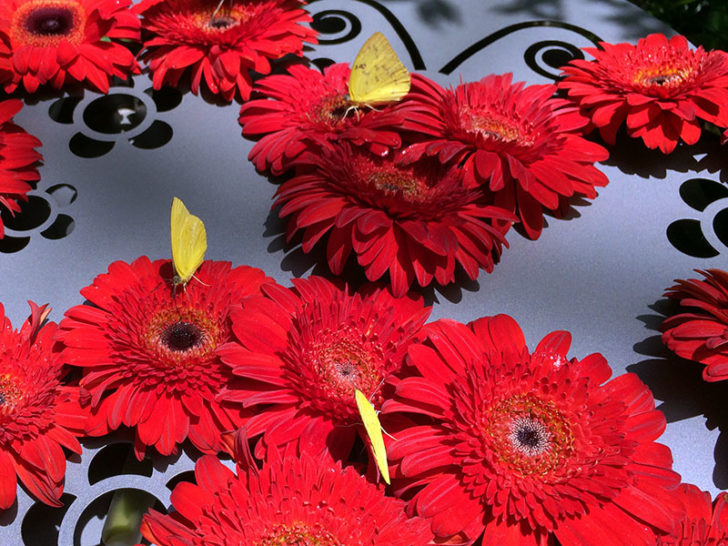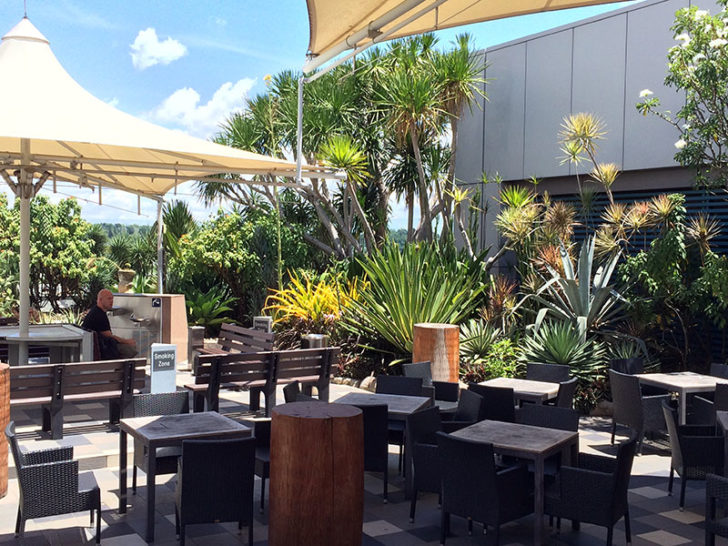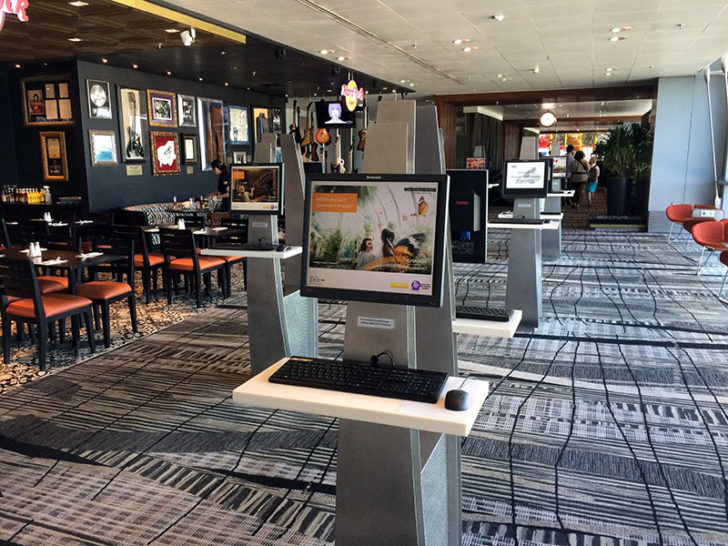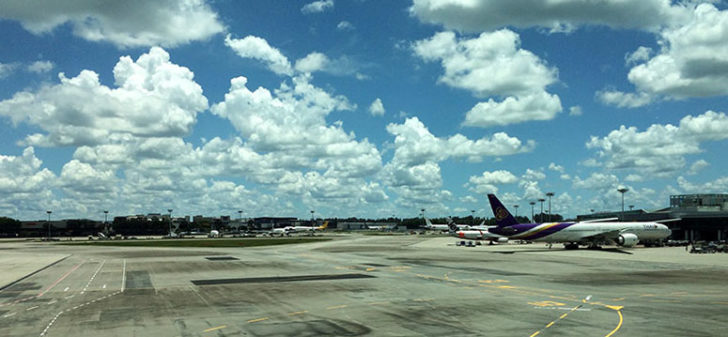Singapore has a split personality. Despite earning a reputation for business and strict rules, some people say it’s one of their favorite cities in the world and offers ample opportunity to relax.
Likewise the airport — your first introduction to the compact city state — is not what you’d expect. Most airports are to be avoided, but people who read this blog probably have gone out of their way to make a connection at Singapore’s Changi Airport. It’s consistently rated one of the best in the world for its seemingly limitless ability to wow travelers.
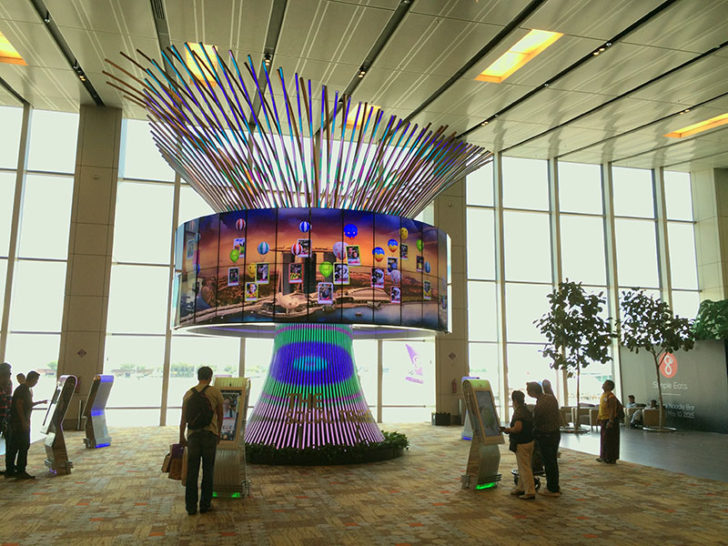
This year is the 50th anniversary of Singapore as an independent country, following a period of transition “from third world to first” while establishing itself as a key commercial center in the region. But last month I received a special invitation from the Singapore Tourism Board to visit the city as a journalist and learn about its virtues as a hub for tourism. Nowhere is that more evident than the airport. During my trip we had the opportunity to get a guided tour by airport management, and it makes as much sense as any place to begin this trip report.
Even the Locals Enjoy Visiting Changi
What I found interesting as someone who has visited Singapore before is that the airport has huge spaces open to the public, effectively serving as a shopping mall for residents in the Changi region of east Singapore. The next time you’re relaxing in the Singapore Airlines’ Private Room, it might be worth taking an hour to explore the rest of the terminal. Above the check-in counters at the newest Terminal 3 is a large public viewing area that some students use to study. On the main level are rotating displays for different destinations, encouraging local tourism. And in the basement is a large food court, a supermarket, shops, and a giant slide (free with a shopping receipt).

But you could probably see similar attractions in any downtown shopping center. So to set itself apart from the competition, Changi Airport Group is building the Jewel, a 5-story glass dome set in the middle of the three terminals and opening in 2018. The inter-terminal train will actually pass through this dome, which will enclose a massive tropical garden along with shops and restaurants. The center of the dome will be left open so that water can flow in as part of a massive waterfall.
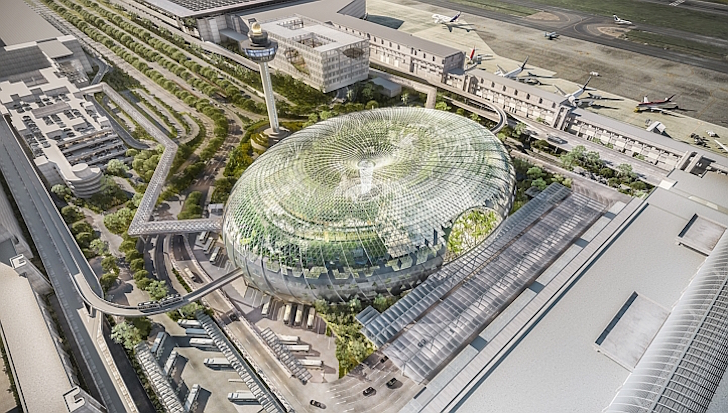
Plans for a new Terminal 4 opening in 2017 are also underway, but what will really impress is Terminal 5. Set to open in 2025, it is expected to increase capacity by 50 million passengers — equivalent to the current Terminals 1, 2, and 3 combined.
Free Attractions Make the Airport a Destination for Travelers
We received access badges to pass through security and tour the airside facilities, as well. Many of you are probably familiar with the usual shopping and dining options, as well as the many airport lounges. I’ve reviewed the SilverKris Private Room before in Terminal 3, available only to first class passengers on Singapore Airlines (Amol reviewed it, too, and LoungeBuddy has a complete list of all Singapore Airlines lounges).
Those without lounge access can still visit one of public Ambassador Transit Lounges or Transit Hotels in each terminal by paying the applicable fee. The location in Terminal 1 hotel even has a swimming pool that is complimentary for guests or approximately $14 SGD for walk-in visitors.
When I’ve passed through Singapore before, my wife has always insisted that we visit the butterfly garden. This is a two-story outdoor garden in Terminal 3, one of many completely free amenities provided to transiting passengers.
In addition to the butterflies, you can find a movie theater with recent films, a cactus garden surrounding an outdoor wine bar, indoor koi ponds, numerous massage chairs, and video game and Internet kiosks.
You’ll find other curiosities as you explore. For example, there’s a “famous” restroom located next to Coffee Bean & Tea Leaf in Terminal 1 that has a glass wall, offering a view of the apron as you take care of business. It’s a must see for any avgeek.
But I think one of my favorite features of T1 was actually by the ticketing counters where an art installation, “Kinetic Rain,” uses hundreds of metal rain drops suspended by wires to create a moving sculpture. My iPhone didn’t do it justice, so here’s a demonstration from the official YouTube video.
Make the Most of Your Layover
There’s a ton to do at Changi, which is why it’s my airport of choice when traveling through southeast Asia. Fortunately it’s easy to get between terminals and explore everything since security checkpoints are located at the gates themselves — you need only go through a modest passport check and show your boarding pass to enter from the ticketing area. Exiting the airport is fast, too. I don’t think I’ve ever spent more than five minutes at immigration.
Remember that international tickets allow you up to 24 hours for each connection, and you are generally allowed to leave the airport if you satisfy the usual rules (Singapore has no visa requirement for U.S. tourists). The airport operates a free tour for passengers with a long layover, or you could easily arrange your own. On our honeymoon, for example, my wife and I took a taxi to the Singapore Zoo before getting lunch on Orchard Road.
One final piece of insider detail: As you leave the airport on your way to the city, pay attention to the plants in the center median. You’ll notice at one point the road becomes very straight and the plants are located in pots instead of buried. This stretch of road is actually an emergency airstrip. To my knowledge it’s never been used — and hopefully never will be — but it’s yet another sign of how Singapore’s Changi Airport is prepared for any and every situation.
Full Disclosure: Singapore Tourism Board provided air and ground transportation, accommodation, meals, and a guide during my visit to Singapore. I received no other compensation, and STB did not review or recommend specific content prior to publication.


